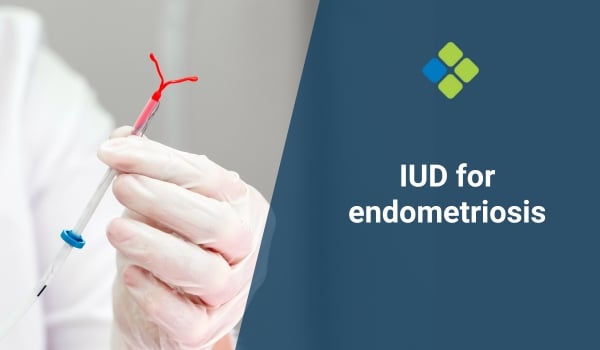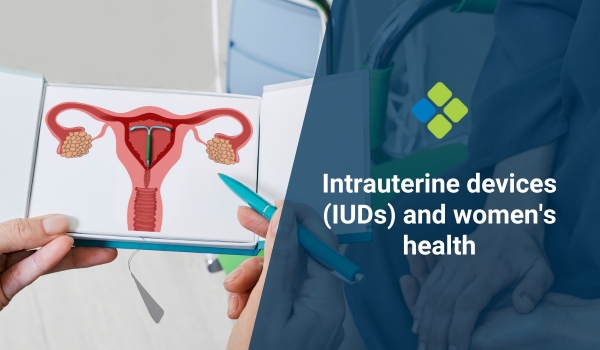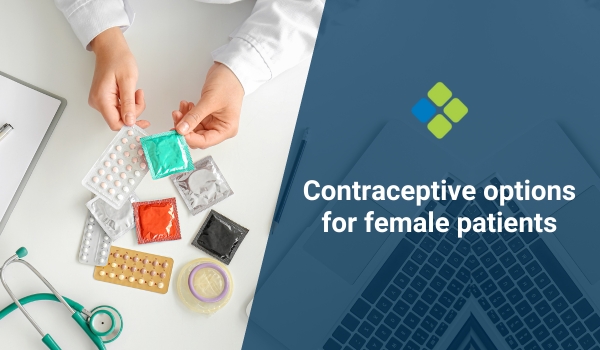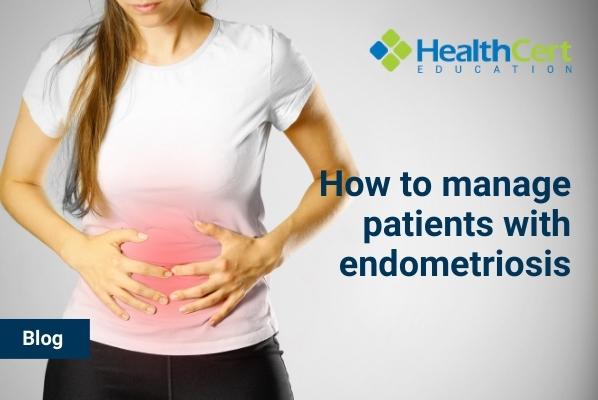The IUD for endometriosis
While there is no cure for endometriosis, an intrauterine device (IUD) can help patients manage their symptoms. This is what you need to know.

HealthCert Education
Endometriosis is a progressive, chronic disorder that occurs when tissue similar to the uterine lining grows in areas it shouldn't, such as the fallopian tubes and ovaries. This tissue can cause inflammation, pain and scarring. While there is no cure, an intrauterine device (IUD) can help patients manage symptoms.
There are around 200 million reported cases of endometriosis worldwide, and one in nine women aged 40 to 44 in Australia have the condition.
Symptoms
Some symptoms of endometriosis include:
- severe cramps
- heavy menstrual flow
- longer periods
- pain during sex
- bowel or urinary disorders
- nausea or vomiting
- infertility
Treatment
Although the exact cause of endometriosis is unknown, the condition has been linked with the hormones progesterone and oestrogen. Therefore, one treatment option for endometriosis involves hormone therapy, which comes in the form of pills, patches, implants, injections, or the placement of a hormonal IUD.
Intrauterine devices
A type of birth control, IUDs are small, T-shaped devices inserted into the uterus to prevent pregnancy. There are two types of IUDs: the copper IUD and the hormonal IUD.
A copper IUD uses a copper coil to prevent sperm from fertilising an egg. Copper IUDs are not recommended for endometriosis relief as they have no hormonal effects. However, an IUD that releases progestin (a form of progesterone) is an effective treatment option for some patients with endometriosis.
How does the IUD work and what are the benefits?
The IUD is placed directly into the uterus through the cervical canal. It releases progestin, a hormone that can reduce the severity of periods or completely stop them. In fact, approximately one third of patients stop having their period after a year of using the IUD. This can reduce menstruation-related pain and heavy bleeding.
IUDs are an effective form of contraception that can last for several years. Some patients consider an IUD to be an easier option than having to remember to take pills or use other forms of contraception.
Oestrogen and progesterone in the form of birth control suppress ovulation and may also slow the growth of endometrial tissue and prevent new tissue from forming.
Due to these hormonal effects, an IUD may:
- reduce the size of endometriosis lesions
- ease pelvic pain and inflammation
- decrease bleeding
While an IUD may provide pain relief for some people with endometriosis, it cannot help treat endometriosis-related infertility because it is a form of birth control.
Side effects
Hormonal IUDs can cause side effects including:
- water retention
- weight gain
- headaches
- tenderness in the breasts
- nausea
- mood swings
- heavier bleeding
- pain in the lower back
- irregular bleeding
- loss of menstruation
- pelvic pain
- cramps
- pain during or shortly after insertion
Although it is very rare, there is some risk that the IUD may puncture the uterus or fall out. In the unlikely event that a woman with an IUD gets pregnant, it may damage the foetus, implant in the placenta, or possibly cause the loss of the pregnancy or an ectopic pregnancy.
Insertion
The insertion of an IUD is a quick outpatient procedure. A tool is used to insert the IUD through the cervix and into the uterus. In most cases, the procedure takes about five minutes. The procedure can be briefly painful, both during and following insertion.
Safety during pregnancy and breastfeeding
IUDs are a very effective form of birth control, preventing pregnancy in more than 99 per cent of cases. However, it is still possible to get pregnant as no contraceptive method is 100 per cent effective.
In case of pregnancy, the IUD may be removed which presents a risk to the developing foetus. It may injure the foetus or imbed in the placenta, or cause premature birth.
People can safely breastfeed with an IUD in place. Patients with endometriosis might want their IUD replaced as soon as possible after childbirth if it was an effective treatment before their pregnancy.
Summary
Endometriosis is a condition that can cause heavy bleeding and pain – especially during menstruation – as well as several other symptoms. While there is no cure for endometriosis, hormonal IUDs can offer some relief from symptoms.
Interested in performing intrauterine procedures?
The HealthCert Advanced Workshop of Intrauterine Systems provides a practical introduction to this procedure. The workshop will give you a step by step guide and valuable insight into the safety guidelines you need to know to avoid complications. You will learn what equipment is necessary to achieve the best outcomes for your patients, with the opportunity to practise on simulated models. This workshop will also demonstrate how to plan patient counselling with an analysis of patient case scenarios. It will enable you to seriously consider this advanced procedure for your practice.

 1800 867 1390
1800 867 1390






